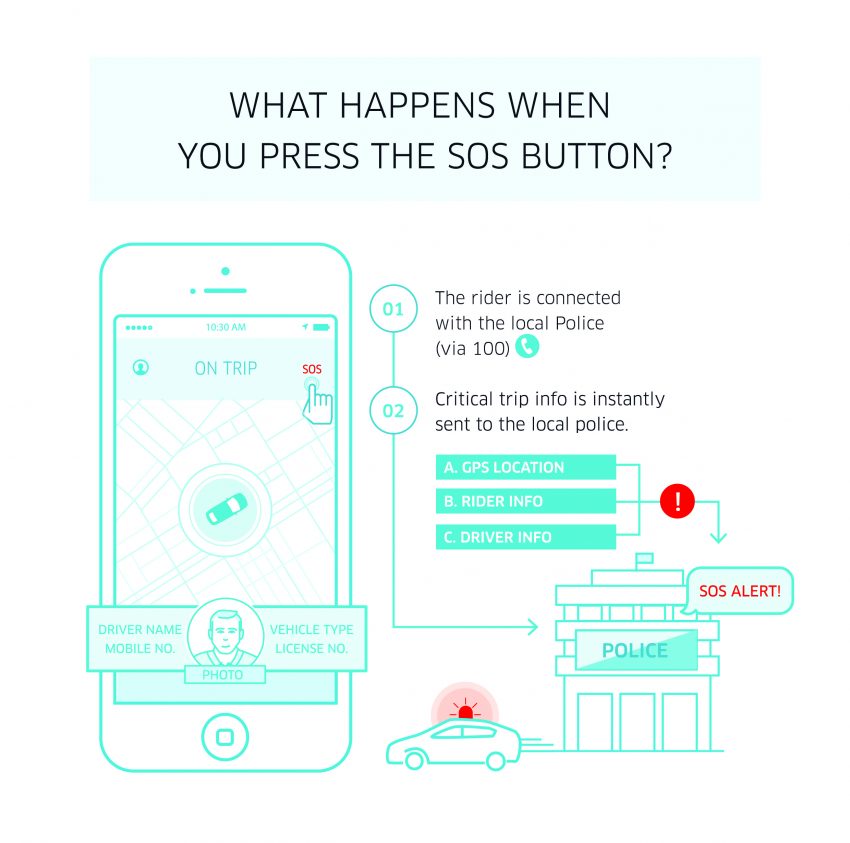Uber India Introduces New Safety Feature: The SOS Button

Uber
Uber India announced that it will introduce an SOS button to its apps, a feature that allows riders to give police crucial information in case of an emergency.
Uber riders have always had their phones on hand, of course, to call police, but an SOS button further arms them by sending their real-time location, identity, and driver’s identity to a local police department when the button is pressed. If a rider fears their driver, for instance, the button allows them to seamlessly contact authorities without drawing attention. As Massachusetts considers its own new regulations of companies like Uber, it’s an interesting new feature to watch.
The rollout of the SOS button in India is in part a response to concerns about rider safety in the wake of a high-profile case of assault there. After a New Delhi woman said she was raped and beaten by her driver, the company was briefly forced to cease operations in the city for several months while it reviewed its safety features.
Uber Boston, like Uber New Delhi, has had some high profile incidents. In December 2014, a Boston Uber driver allegedly drove a female passenger to a remote location, then beat and sexually assaulted her. In February, another Uber driver was charged with sexually assaulting a rider. In America, critics have focused on beefing up background checks on drivers. Gov. Charlie Baker’s new bill proposing regulations on the ridesharing industry includes a background check provision. That puts the responsibility for ensuring rider safety on the company, rather than putting the onus on the rider to act when the situation turns sour. And that’s good, but you wonder whether law enforcement would welcome the real-time data an SOS button could offer, too.
CityLab points out that the technology is exciting for more than just ridesharing app users. More and more, people are starting to push for the ability to text 911 in an emergency when using the phone could threaten their safety.
Vermont is one of the few leading the charge to put citizens in touch with emergency crews when voice chatting is not an option (say, for instance, in a circumstance in which a person doesn’t want to draw additional attention). If Uber’s SOS Button proves useful in India, similar software could have much broader applications, too.
Yet another reason to keep an eye on the rollout of the new technology, however far from Boston’s Uber market it may be.


